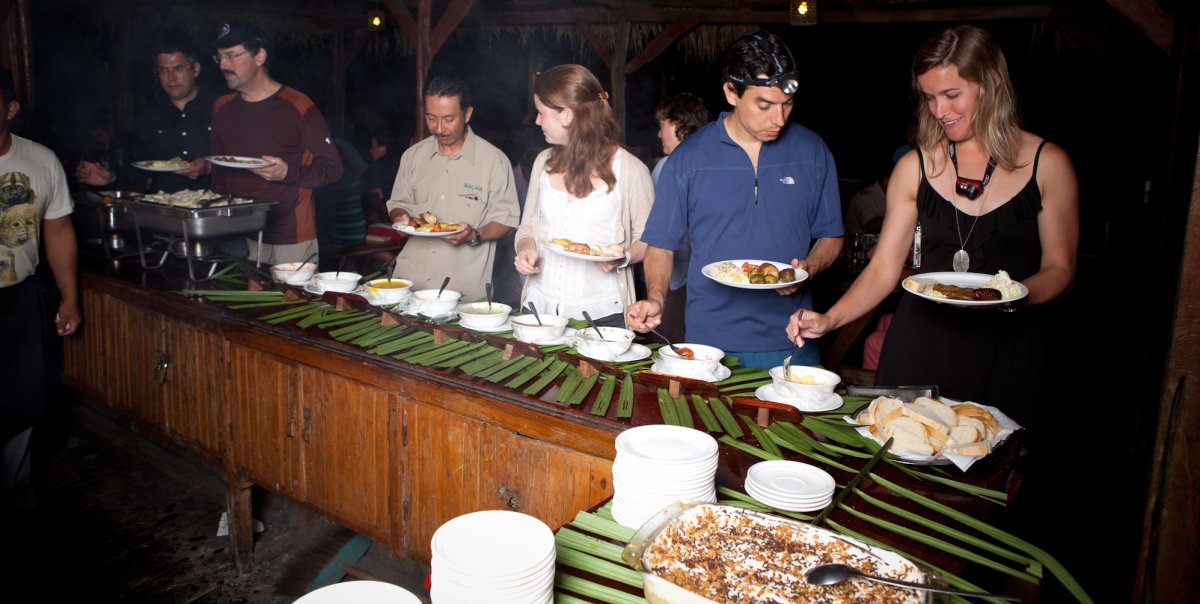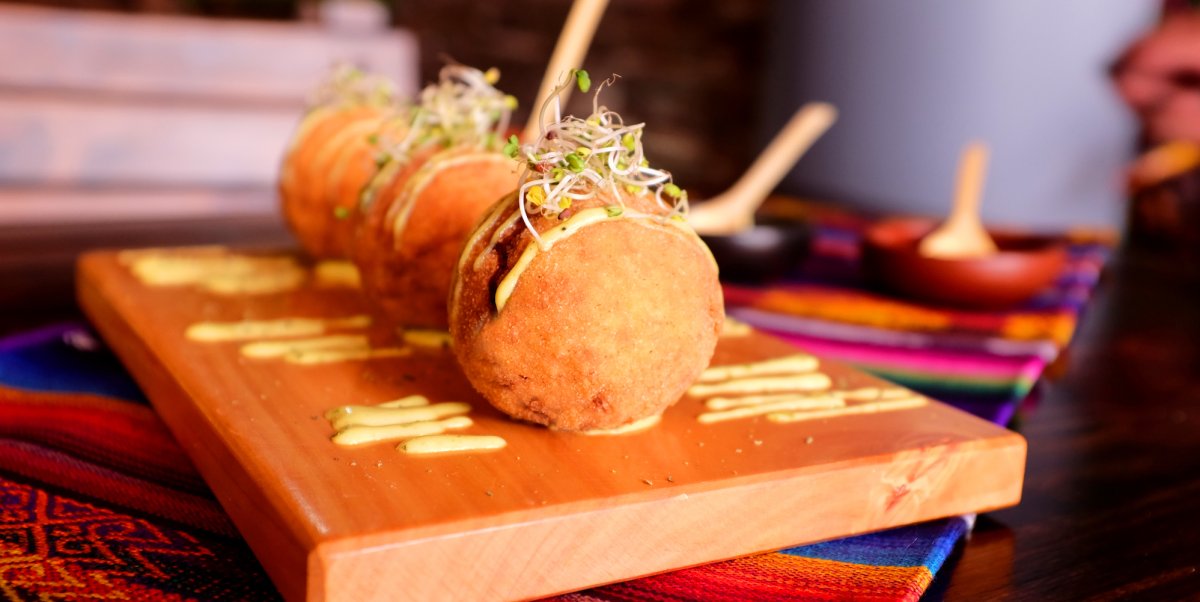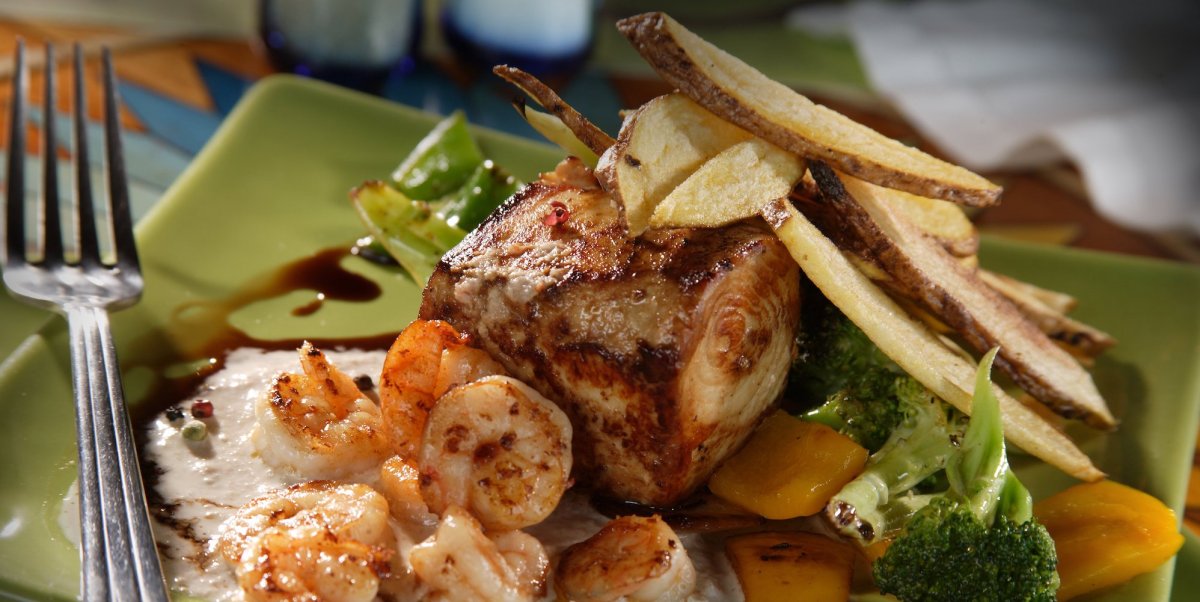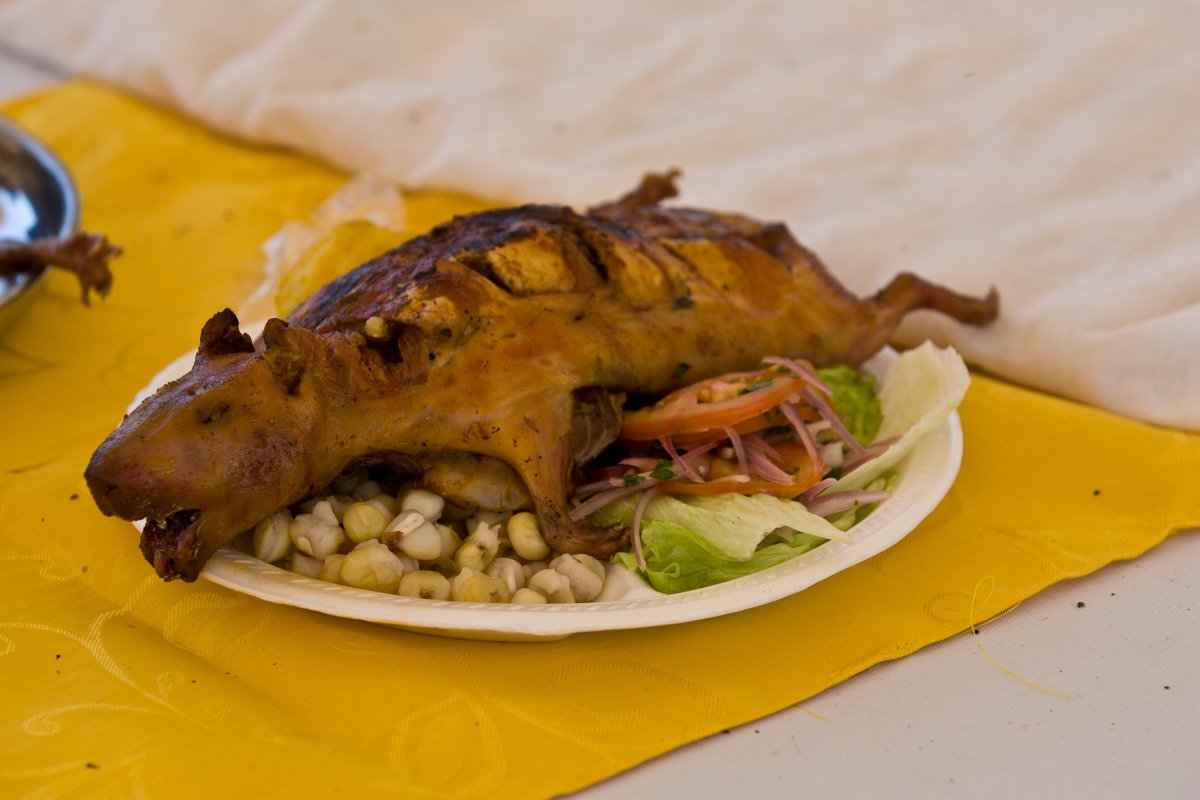What to Eat When Visiting the Galapagos Islands
The culinary traditions of Spain, the Andes, and the Amazon have all left their mark on Ecuadorian cuisine, which over time has filtered across the Galapagos Islands. But this remote archipelago also has a few unique dishes up its sleeve, drawing largely from the marine abundance of its surrounding waters.
The Galapagos Islands scatter across both sides of the equator in the Pacific Ocean, roughly 550 miles off the coast of Ecuador. Once owned by Spain, they were taken by the newly independent Republic of Ecuador in 1832, and in recent years, the islands have become a must-visit destination for wildlife lovers.
The Galapagos Islands lie in the heart of one of the world’s most abundant marine ecosystems, meaning that the “fruits of the sea” feature heavily on its menus. In addition to a variety of fish, shrimps, clams, and crabs, you’ll also find decadent lobsters and the rare canchalagua (a black-shelled mollusk). Ecuadorian meats such as beef, lamb, and chicken are also readily available and are usually served alongside the ubiquitous patacones (fried plantains).
The archipelago’s landscapes vary from lushly vegetated highlands to seemingly barren volcanic slopes and coastal lagoons teeming with birdlife. In addition to its geographical diversity, the conservation of the Galapagos Islands has allowed many plants and vegetables to thrive, and the availability of tropical fruits is always a pleasant surprise.
In this article, we’ll introduce some of the foods to keep an eye out for while exploring the Galapagos Islands, as well as the delicious dishes they are transformed into.

Patacones
If you're after a local version of French fries while visiting the Galapagos Islands, then look no further than patacones. These fried, green plantains are available as a side dish in most restaurants and are the perfect accompaniment to meaty seco or the vegetarian arroz con menestras.
Patacones are created from slices of plantain, which are then transformed into perfect rounds using a bottle and a tostonera wooden press. They are fried twice in oil until they are crisp and golden brown in color. Patacones are usually salted (just like French fries) before being served and are moreish, to say the least.

Cassava bread
If you’re after a quick breakfast or snack on the go, look out for cassava bread, which is popular along Ecuador’s coastal areas. It’s basically a cheesy bread that’s made using mozzarella and/or Dominican leaf cheese that is freshly grated and baked into the dough.
Cassava bread is usually served alongside fresh fruit or smoothies at breakfast, as well as being a suitable side for meat or seafood-based dishes.

Bolon de verde
Bolones are a quintessential Ecuadorian snack that are also readily available in the Galapagos Islands. These delicious dumplings are comprised of mashed-up green plantains that have been stuffed with cheese, chorizo, or bacon before being fried until crispy. Bolon de verde is a particularly popular breakfast food and is often served with a side of local, tropical fruits, such as papaya, guava, and tree tomatoes.
Sometimes you’ll see bolones referred to as “Galapagos dumplings” and they are a must-try at least once while you are in the islands. We recommend accompanying them with a strong cup of Ecuadorian Arabica coffee.

Ceviche, Arroz Marinero, Encebollado, Sopa Marinera and More!
Considering the Galapagos Islands’ remote ocean setting, it should come as no surprise that seafood features heavily in the local cuisine. In its most pure form, look out for ceviche, which is found throughout Latin America and involves the curing of raw fish and/or seafood in citrus juices. What makes ceviche unique in the islands is the use of canchalagua, a mollusk with a round, black shell that has the flavor of a clam and the texture of an octopus.
Also found throughout the Galapagos Islands is arroz marinero or “seafood rice”, which consists of clams, shrimps, and mussels that are cooked with yucca, onion, and plantain before being served over a bed of rice. But the rice is no ordinary rice, with garlic, pepper, and coriander adding to its flavor while achiote (a spice from the seeds of the achiote tree) gives it a reddish tinge.
But perhaps the most famous seafood dish in the Galapagos islands is encebollado, a thick, fish-based soup that is served for breakfast, lunch, and dinner. It usually features albacore tuna with boiled cassava, onions, tomatoes, and peppers, and a garnish of lime juice, chilis, and cilantro.
Sopa marinera is another popular take on seafood soup and distinguishes itself with the use of ground peanuts as part of the broth. The recipe differs slightly from restaurant to restaurant but you can expect to find clams, shrimps, crab, and fish, as well as white wine, bay leaves, cilantro, and achiote.
The Galapagos Islands are also famed for their red and green spiny lobsters, which are used to create a myriad of dishes. One of the most popular is langostino encocado, which sees lobster cooked in coconut milk with garlic, onions, ginger, orange, and lime juice. You should also keep an eye out for exotic sea cucumbers, which are served in a variety of ways and are believed by many locals to be an aphrodisiac.

Seco, Hornado & Llapingacho
If you’re needing a break from seafood, then consider ordering seco with your choice of meat. You can select from chicken, lamb, beef, or goat that is cooked in a flavorful and fragrant sauce. Seco is usually served over rice with a side of fried plantations, making for a filling and cheap meal.
If you’re exploring the highlands of the Galapagos Islands and visiting the local markets, keep an eye out for hornado or whole-roasted pig. It offers plenty of sustenance if you’re embarking on a long hike and is usually served with seasonal vegetables and llapingacho (potato patties that have been stuffed with cheese).

Ice cream
While you can find ice cream in all corners of the globe, the Galapagos Islands sets itself apart by making its ice cream from 100% real, local fruit. It’s always rich and creamy, making it a popular dessert or mid-afternoon snack if you’re in need of a sweet treat. In addition to scoop ice cream, you can find packaged ice cream on a stick that is made in the archipelago.



